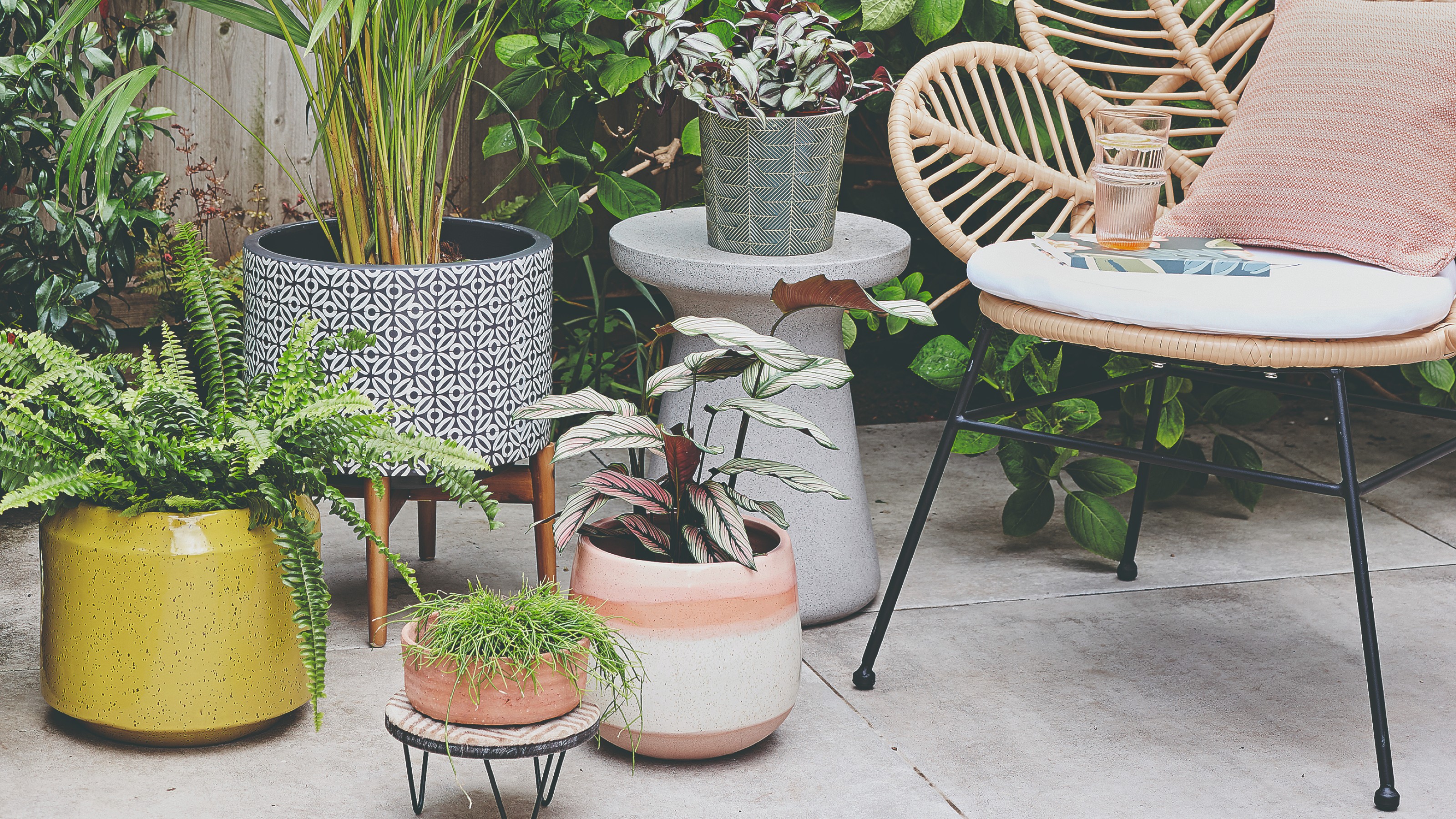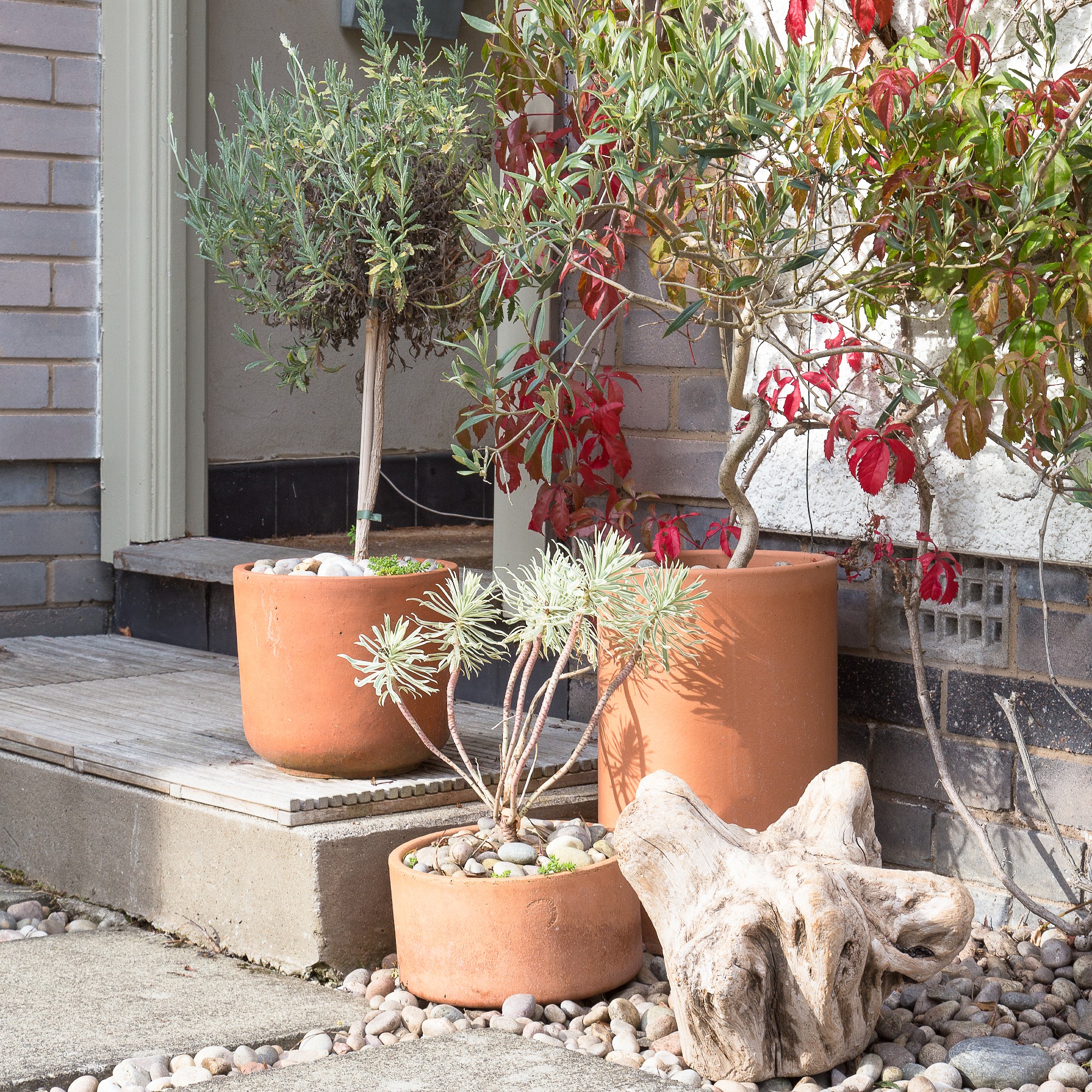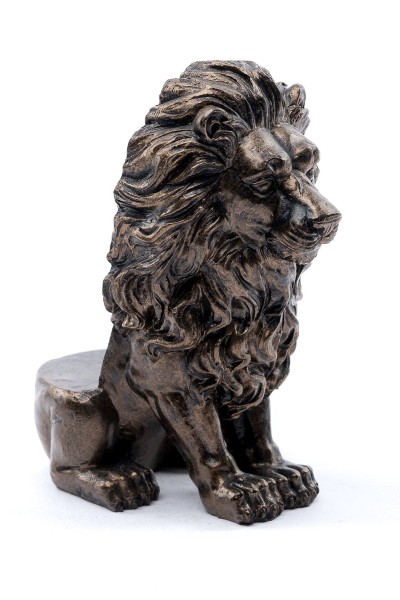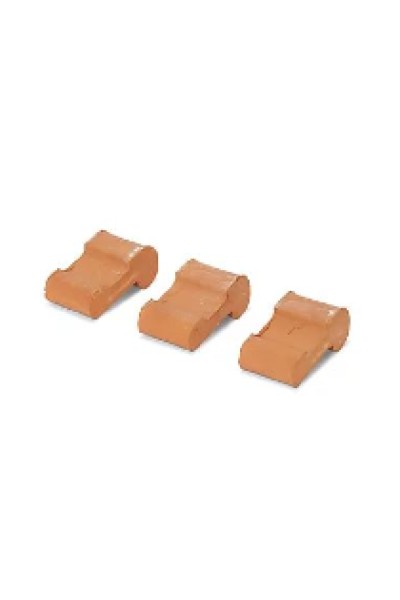If you get one thing for your garden this autumn, make it this £4 buy – your potted plants will thank you
Plant pot feet are your secret weapon to help pot plants survive autumn and winter


There is not as much active gardening to be done during autumn and winter as most plants enter their dormancy. But if you do one thing for your garden this season, then let it be adding plant pot feet to your potted plants.
A vital part of overwintering - helping your plants survive during the winter months, in case you were wondering what’s overwintering - plant pot feet can save your potted plants from getting waterlogged, damaged by frost or attacked by pests in your garden.
That all sounds pretty good, especially considering you can get them for as little as £4. Depending on how fancy you go with them – there are some creative designs out there to seriously upgrade your container garden ideas. Or if you decide to go down the DIY route, you don’t need to pay anything at all.
Garden plant pot feet

Using plant pot feet is crucial to overwintering hydrangeas in pots. But really, all outdoor potted plants can benefit from them. It could be one of the ways how to protect an olive tree in winter, for example.
‘In general, it's a good idea to use pot feet on the majority of potted plants, especially those that are kept outside and are susceptible to excess moisture and cold weather,’ says Steve Chilton, garden expert at LeisureBench.
And it’s not just about the kinds of plants that would benefit from plant feet, but also the types of pots. ‘For larger and heavier pots, using pot feet is highly recommended,’ advises Petar Ivanov, Fantastic Gardeners' gardening expert. ‘These pots can put more pressure on the surface beneath them, leading to compacted soil and reduced drainage and elevating them with pot feet helps maintain better soil structure and drainage.’

Steve Chilton is a passionate and knowledgeable garden expert with several years of experience within the field. Steve has developed strong expertise for all things nature and plants and is a keen educator and loves to share this knowledge with others. He strives to simplify complex garden practices and encourage eco-friendly gardening.
Why are plant pot feet beneficial?

There are several reasons why you should invest in some plant pot feet to help your garden potted plants during the autumn and winter seasons. The first is better water drainage.
Sign up to our newsletter for style inspiration, real homes, project and garden advice and shopping know-how
‘Pot feet elevate the pots, allowing better drainage,’ Petar says. ‘During the colder seasons, excess moisture can accumulate in the soil, leading to root rot or other fungal issues. To help with that, elevating the pots ensures that water can easily drain away, preventing waterlogged soil.’

Petar Ivanov is one of the company's top-performing experts and manages over six teams of gardeners, delivering stunning landscape results and fostering a deep connection with nature through his work.

Another benefit is protection from cold and frost. ‘The freezing and thawing cycle can be detrimental to potted plants and elevating the pots with feet helps to minimise the direct contact with cold surfaces, reducing the risk of the soil and roots freezing. This is especially crucial for plants that may be more susceptible to cold damage,’ Petar explains.
Last but not least, one of the major benefits of the use of pot feet for your best outdoor pots is protection from pests. ‘Some pests, such as certain types of soil-dwelling insects and rodents, can be deterred by elevating pots. If your garden is prone to these pests, using pot feet can provide a barrier that makes it more difficult for them to reach the plants,’ Petar says.
Where to buy pot feet

Plant pot feet don't need to be invisible or plain. They can be creative and fun, making for another piece of garden decor. As is the case with these hardwearing metal feet in the shape of lions. And the Etsy store makes them in the shapes of various animals.
FAQ
What can I use for plant pot feet?
While you can purchase specially designed plant pot feet, the most common being made from terracotta, rubber or metal, you can also DIY them yourself.
‘Wine corks or bottle caps are effective, while some people use stones and attach them to the bottom. As long as your pot feet are strong, weather-resistant and reliable, then any material would work,’ Steve advises.
Petar further elaborates, ‘Bricks or stones are easily accessible and often available in various sizes. If you stack them to your desired height, creating a stable base for your pots, they can provide a natural look that blends well with a garden landscape. Another option is wine corks, which are recyclable, especially if you have spare ones that you can repurpose.’
‘Lastly, you can also use plastic bottle bases as another recyclable solution. Cut the bases of plastic bottles to create small, lightweight pot feet and stack multiple layers for adjustable height.’
How do you keep plant pots off the ground?
The best way to keep plant pots off the ground is adding pot feet.
‘Pot feet elevate the pots, allowing excess water to drain properly and prevent waterlogging,’ Steve says.
Whichever you decide to go for, just remember to keep those plant pots off the ground to protect your precious plants during the cold winter months.

Sara Hesikova has been a Content Editor at Ideal Home since June 2024, starting at the title as a News Writer in July 2023. She is now also the Ideal Home Certified Expert in Training on Furniture, and so far has tested over 150 different sofas.
Graduating from London College of Fashion with a bachelor’s degree in fashion journalism in 2016, she got her start in niche fashion and lifestyle magazines like Glass and Alvar as a writer and editor before making the leap into interiors, working with the likes of 91 Magazine and copywriting for luxury bed linen brand Yves Delorme among others.

